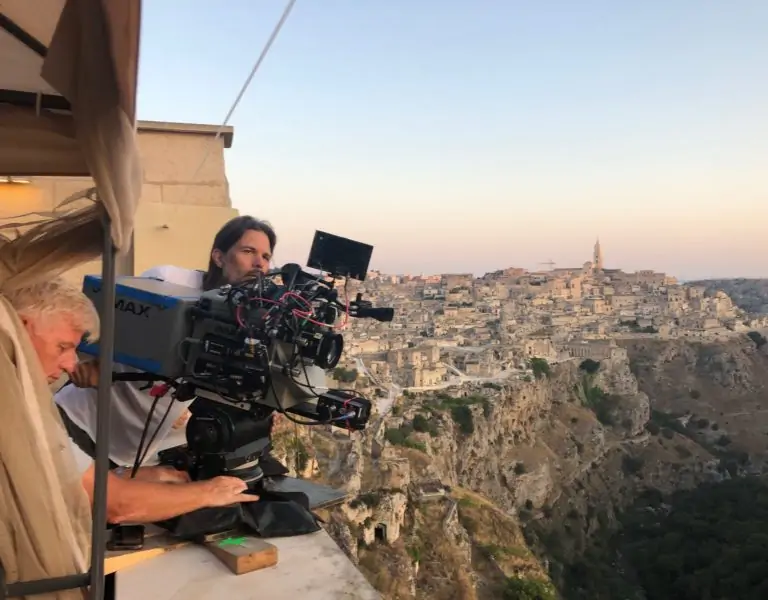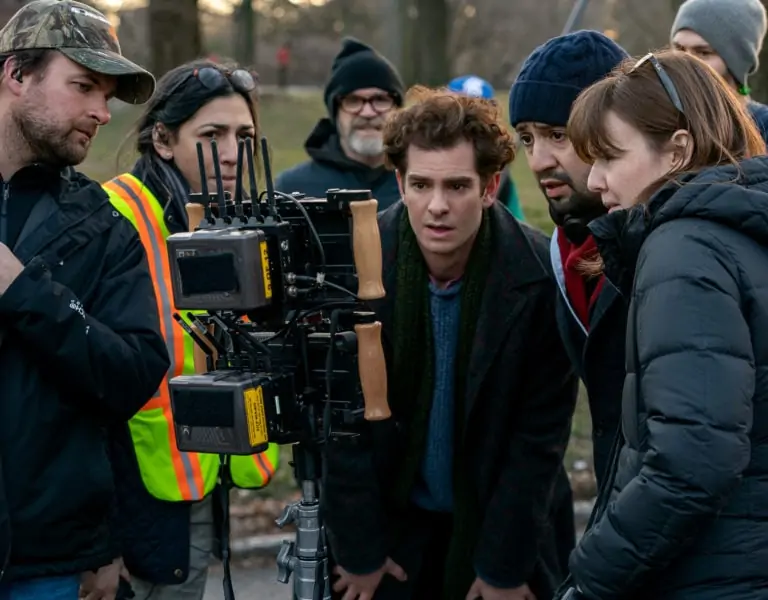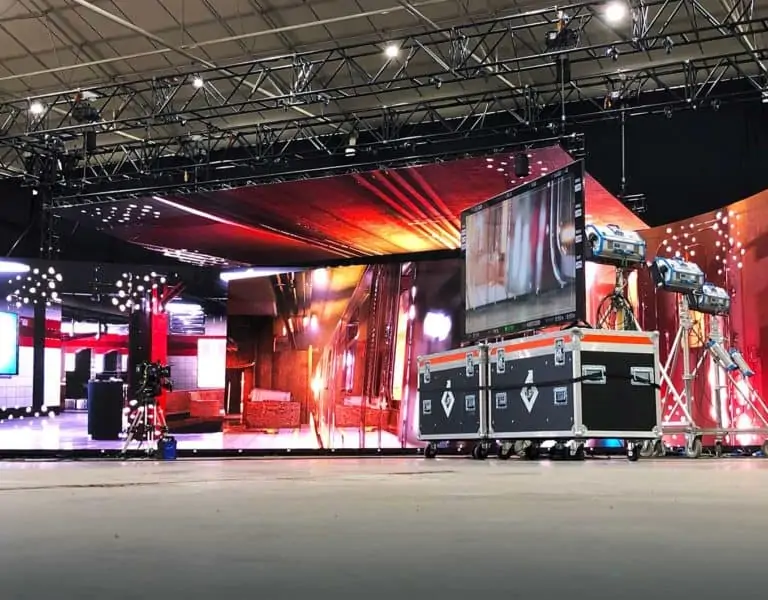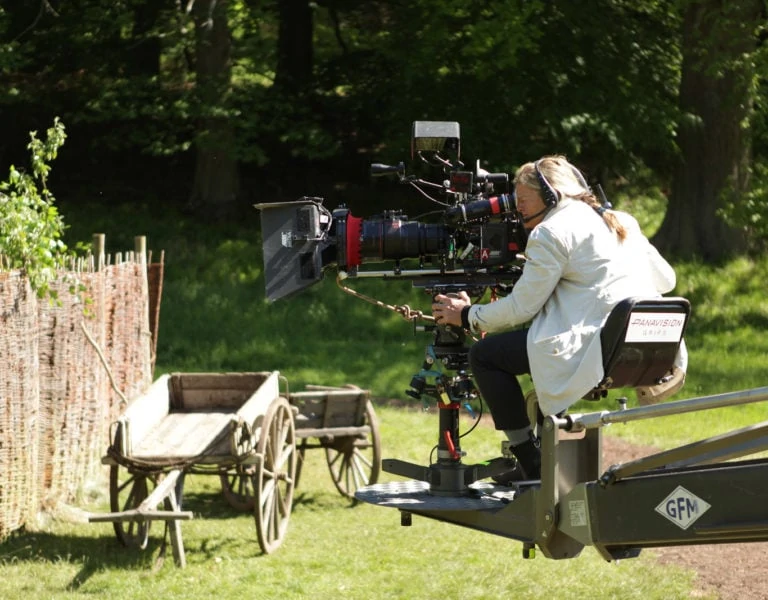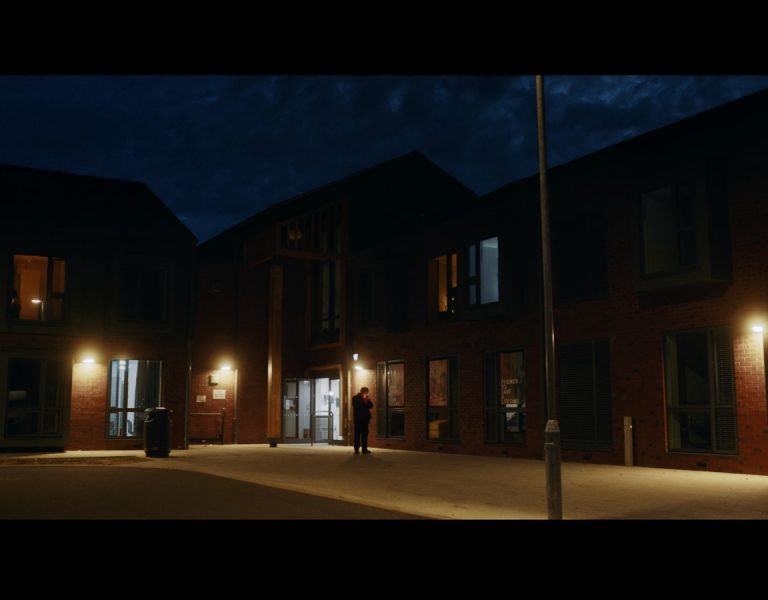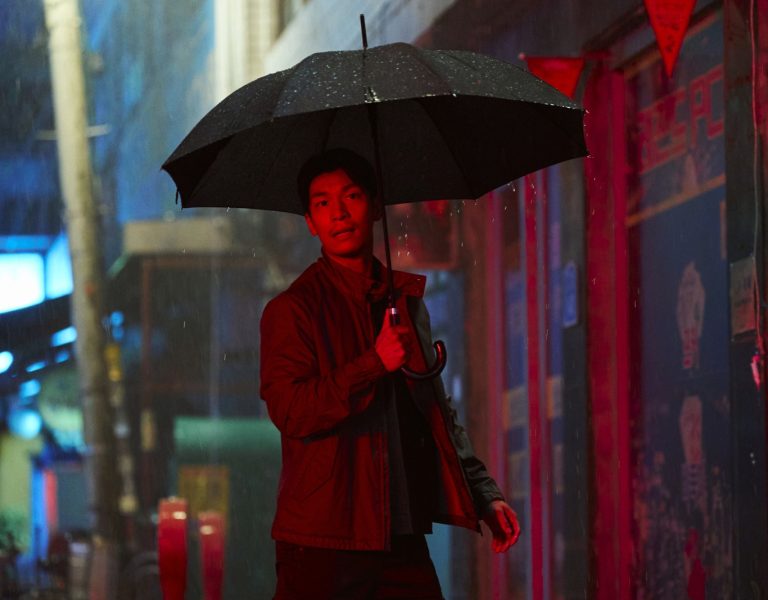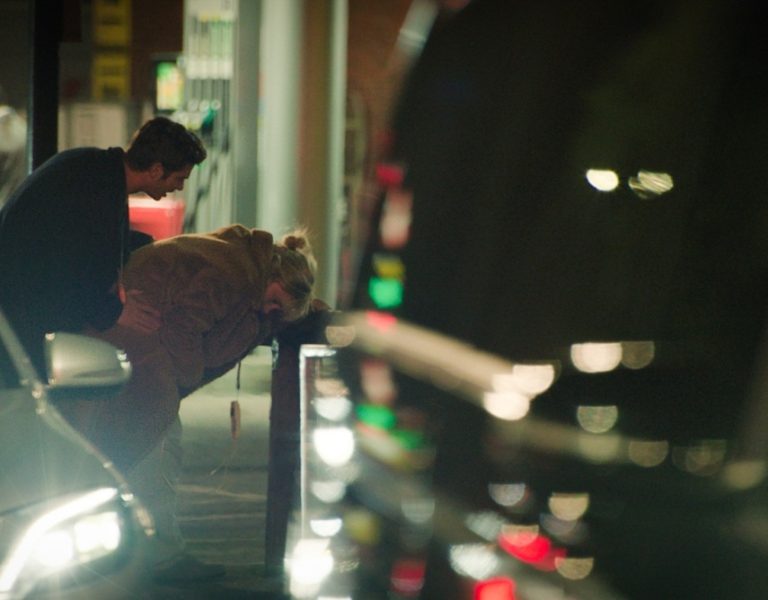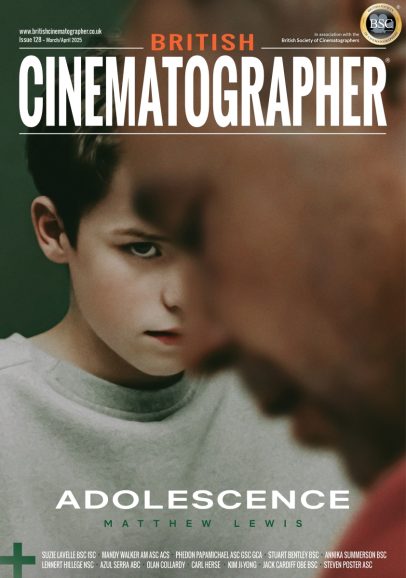As wildfires increasingly devastate the planet, filmmakers Nova Ami and Velcrow Ripper’s Incandescence captures the global spread of “mega-fires,” exploring the chaos of the ‘Pyrocene’ era, writes Mark London Williams.
“The planet is entering what some are calling the ‘Pyrocene’—the age of fire, thanks to the climate emergency, thanks to a heating planet. We began thinking about making the film after we personally experienced our town being engulfed in the wildfire smoke from a fire that was hundreds of miles away and realised that everyone, everywhere, is beginning to feel its effects.”
Everyone, everywhere indeed. Whether the fires are literal, or even “merely” figurative, everyone now has been reminded, in the starkest terms, of John Muir’s observation that “when we try to pick out anything by itself, we find it hitched to everything else in the universe.”
Although the picking apart certainly seems to be prevailing over the hitching together here across the pond, almost making a monthly column seem like a quaint throwback to an earlier era of presumed geo-political stability. How much will things have changed in a month? This is being written over the weekend of announced tariffs by the current administration on countries that had been – up until a week or so ago – two of America’s closest allies.
There are whole columns that could be written just about those levies – and the possible retaliations (particularly from Canada, where a lot of filming and post-production still takes place, and China, where U.S.-based studios had, at least until recently, also relied upon box revenues from audiences there). And while, by the Monday after, much of the now-belayed policy looked like it may have been performative after all (there was a reason the surcharges were announced two days before the markets reopened here) should these tariff wars spread to the EU, as threatened, what happens with accessing all those formerly “cheap” – again, from a U.S. studio perspective – production facilities in eastern and central Europe? Or will those be feint-and-parry policies too, leaving little but broken trust in their wake?
Normally – and who knows when that word will apply again? – we’d be writing about having waded a third of the way into award season. We’d even have some early results from gatherings like the American Cinema Editors’ ACE Eddie awards, since those honours can often serve as a reliable prism through which to view likely Oscar favourites. But there were no ACE Eddies, because they were scheduled to be the first such gathering after the ravaging wildfires that destroyed so much of Pacific Palisades and Malibu, on L.A. county’s west side, and Altadena, on the county’s east.
They were the first to experience what the Grammys is grappling with – also over this same ashes-and-tariff laden weekend – which, as no less than the Beeb itself noted in an article about how that ceremony will proceed, said that “showrunners are looking to strike the right tone honouring the victims of the fire and displaying a defiant Los Angeles that will persevere. But there is concern the optics of rich celebrities dolled up with smiles on a red carpet could come off as tone deaf.”
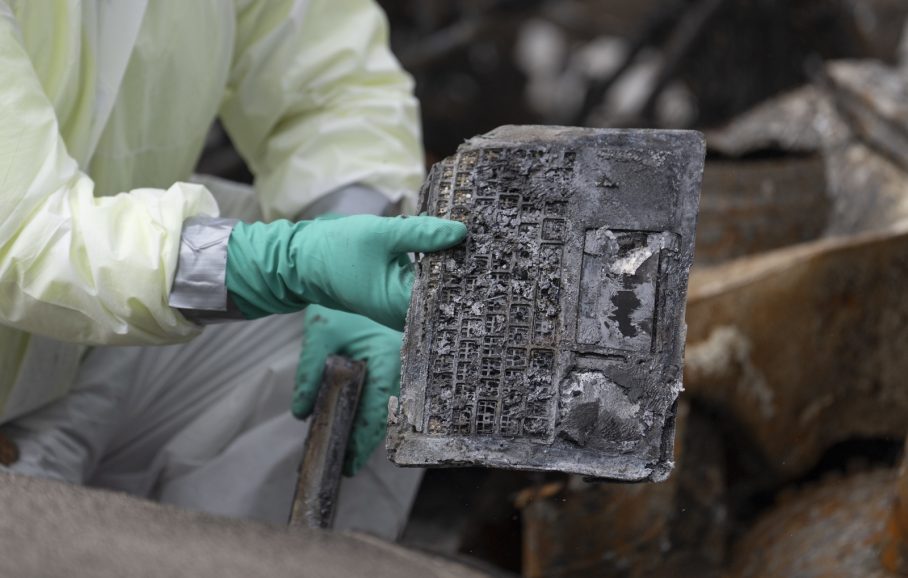
Which is, of course, something that all the shows – up to and including the Oscars — are grappling with. The Eddies, in fact, weren’t cancelled outright, just delayed until after the Academy Awards, and reworked as a “Come As You Are” event, “allowing guests to focus on solidarity and celebration,” with some additional relief efforts to be announced. Even the International Santa Barbara Film Film Festival, with its various Academy-anticipating panels and retrospectives, where your correspondent is headed shortly after filing this, notes they are partnering with Direct Relief for fundraising as “a response to the unprecedented wildfires in and around Los Angeles.” For the duration of the fest, all donations will also be doubled thanks to a matching grant.
Which talk of coping with aftermaths brings us to our opening quote, from filmmakers Nova Ami and Velcrow Ripper. They’re documentarians from Canada – and it’s not too far-fetched to ask whether they’ll be able to make it past customs this time around – who’ll be bringing their film Incandescence to the festival. The film charts the spread of “mega-fires” across the globe, weaving together “immersive on-the-ground footage with first-person accounts from Indigenous Elders, first responders and ordinary people forced to react to a rapidly evolving ecosystem.”
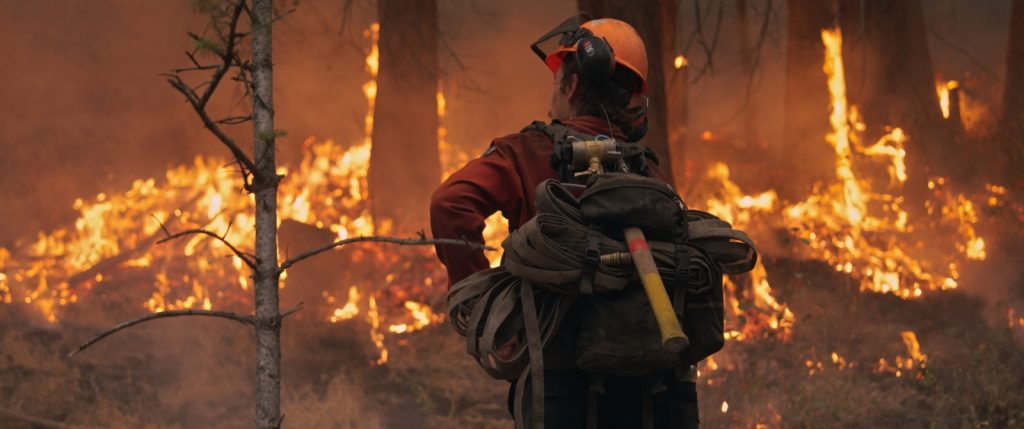
We did an email interview ahead of their hoped-for return to Santa Barbara, where they’d previously premiered their documentary Metamorphosis, which was more specifically about California’s 2016 Lake Fire, one of the biggest to ever hit the state (a “record” perpetually in danger of being superseded). “Firefighters at that time were beginning to notice a difference in the fires’ intensities and that fire season was getting longer and longer, that wildfires are intensified by climate change,” they wrote. “The temperatures are hotter, it’s drier, we’re experiencing more drought and floods, and all of these elements are contributing to more wildfires. Fires are becoming more extreme and inescapable.”
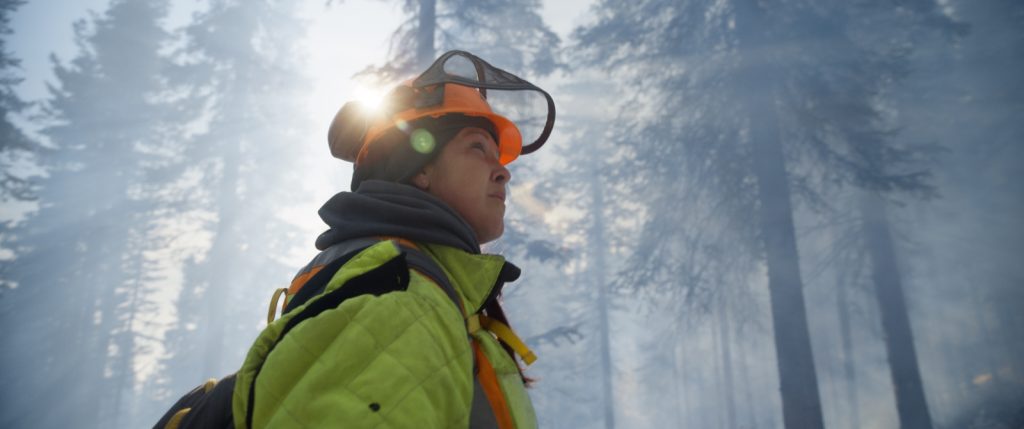
Capturing that chaos, their cinematographer Vince Arvidson “filmed the majority of our footage, using the Red Gemini. We opted for a wide, cinematic aspect ratio of 2:40 to capture the landscape and the scope of wildfire. We used some specialised pieces of kit, including a probe lens for the extreme macro shots and a high frame rate Phantom Camera to record extreme slow-motion shots of fire, to really slow it down and get those intimate shots and some of the dramatic-detail recreations, like the bird’s nest burning and details of flames in extreme slow motion. For those recreation scenes we also had fire effects specialists who helped with the pyrotechnics and shots like the fire reflection in water.”
But of course it isn’t just a matter of the right camera when filming in the Pyrocene. The film is produced and distributed by the National Film Board of Canada (NFB), but additional support came from British Columbia’s provincial fire agency, “[who] really supported us in going out to film, and at times we were able to film in active fires. We were dressed in protective gear called Nomex suits, which are completely fireproof. Filming in those conditions, even for the small amount of time that we were filming, gave us so much appreciation for what wildfire wildland firefighters deal with on a daily basis.”
And of course, the urban ones as well. An appreciation much in evidence not only at the aforementioned Grammys where the LAFD presented the record of the year award (to Beyoncé) to a standing ovation – but also at a couple of the entertainment biz community gatherings we covered, starting the week after the worst of the flames had torn through (though note the fires were only finally declared 100% contained on the same Grammy-and-tariff weekend we’re writing this column).
Both gatherings were hosted at the Tiffen / Steadicam Technical Centre in Burbank, one, midweek, by Women in Media and then the following Saturday, another by the Society of Camera Operators.
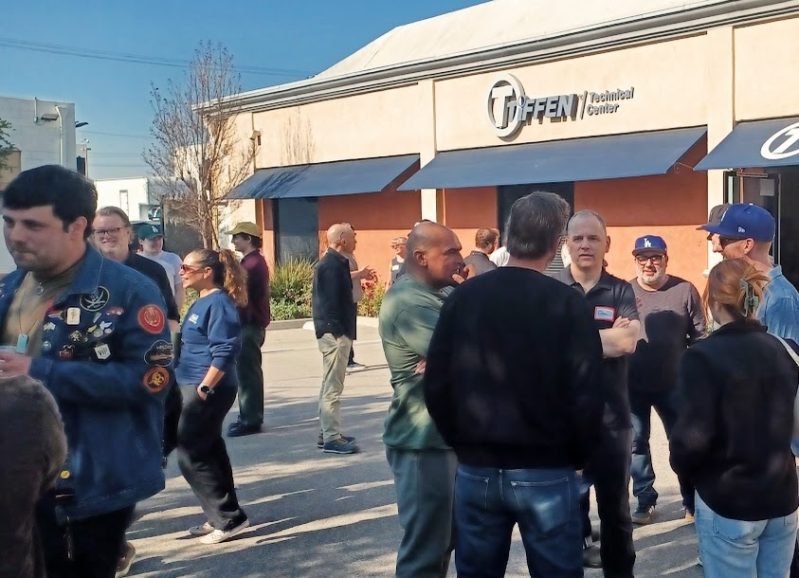
At the WiM gathering, over coffee and bagels – which eventually grew to include doughnuts, as a memorial to film director David Lynch, whose passing was announced that same morning – Executive Director Tema Staig, addressed the group asking what people needed, wanted, or could offer, in the wake of the firestorms, while also praising “our friends at the locals who had pallets of stuff within days,” for those who were displaced.
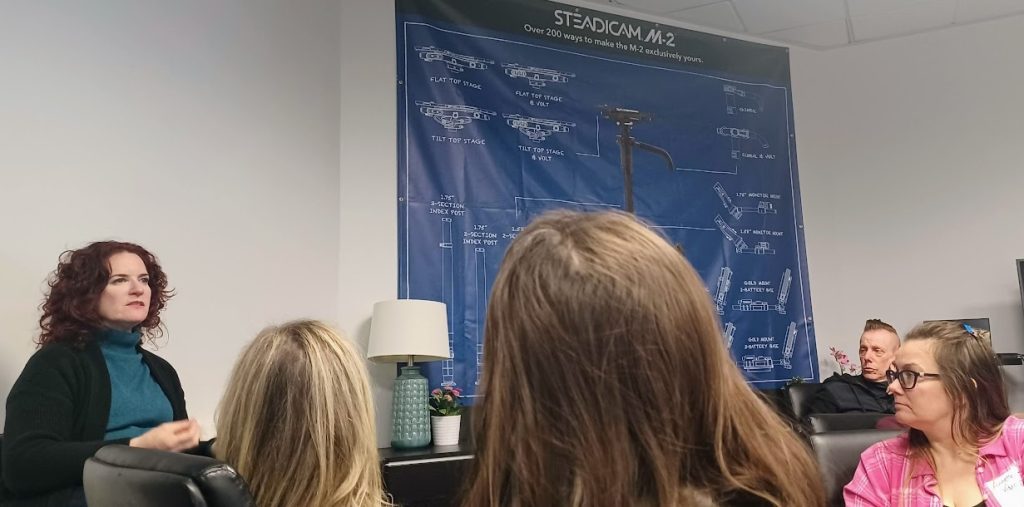
There were many offers of shelter (bringing up a question of whether those still in need of it were even able to make such events) but there was another kind of displacement already afoot too, as film and TV jobs have yet to fully return, post-Covid and post-strike(s). “The clarion call,” one participant said, “is we need work.”
Which echoes what a lot of folks, including prominent above-the-liners, are saying with the newly launched Stay in LA campaign, advocating even greater tax credits for productions in actual Hollywood (or anywhere else in the state), in the face of not only the fires, but the recent FilmLA report that saw “overall annual production finish[ing] the year -5.6 percent below the prior year. That made 2024 the second least productive year observed by FilmLA; only 2020, disrupted by the global Covid-19 pandemic, saw lower levels of filming in area communities.”
Though at the SOC’s “Come Together” event, the concerns were still more immediate, with one multiple Emmy-winning DP of our acquaintance asking if we knew about any ASC members whose homes might have been lost. Those following days included a refresher course on the urgency of face-to-face information – and comfort – amidst our current tidal wave (firestorm?) of digits.
Besides the support, and information about giving or getting assistance, SOC’s gathering also featured a warm meal, both from caterers serving hot falafel plates, and coffees and pastries from camera operator Kako Oyarzun, who was there with his Kako’s Cafecito, a full-service stand he started “after making cafecitos (Cuban coffees) on set for over five years.” Oyarzun is “using my downtime between gigs to build this catering business with the vision of eventually transitioning into a full-time operation with a brick-and-mortar location.” And using that downtime for doing a lot of good works in a recovering community, too.
He was there with fellow SOC and Local 600 member Rob Whitaker, dispensing both excellent java, along with his own guava pastries, and told us later that “since the fires started, I’ve felt a strong urge to give back to the community and support the first responders and volunteers stepping up during this challenging time. Our first stop was with the amazing folks at It’s Bigger Than Us in Leimert Park. I was out there with my girlfriend, Brenda Zuniga, and our great friend, Jeremiah Smith. Both of them are camera operators on Abbott Elementary, and together we managed to serve nearly 100 volunteers in just about four hours!”
Smith and Zuniga would show up at the SOC gathering too, to help dispense the soothing drinks, and a couple of days later the Cafecito found itself at the LA Food Bank, where “another friend and fellow camera operator, Steven ‘Stever’ Paul, joined in to serve coffee to the volunteers who are tirelessly working to distribute much-needed food to those affected by the fires. I’m still reaching out to see where else we can lend a hand to those putting in such incredible effort.”
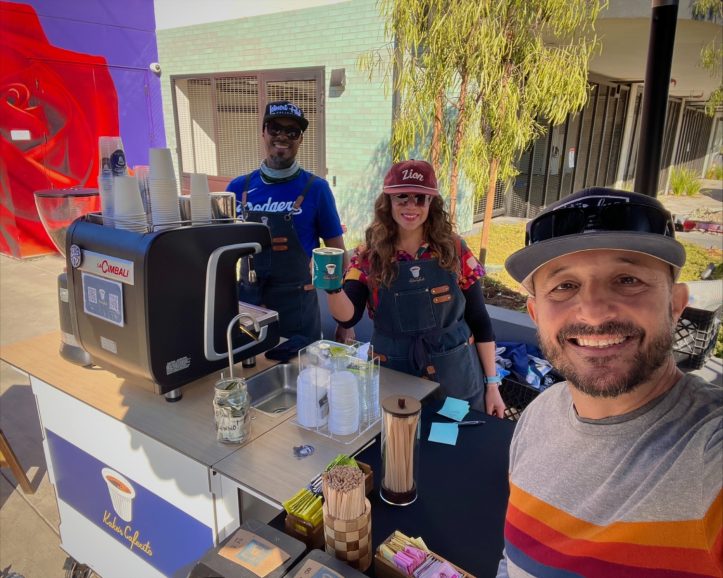
Oyarzun also mentioned knowing “several people who have lost their homes, and the outreach for help has been heartening. Many are utilising GoFundMe pages to seek assistance. However, there’s also some uncertainty surrounding the rebuilding process, especially with the hit the entertainment industry is taking and the high cost of living in a city like LA. Yet, LA is a resilient city, and I truly believe it will bounce back.”
Though of course the “bouncing back” can’t just be LA’s, or Hollywood’s alone. Clearly, we are all in the Pyrocene together.
More soon. Meanwhile: @TricksterInk / AcrossthePondBC@gmai.com
